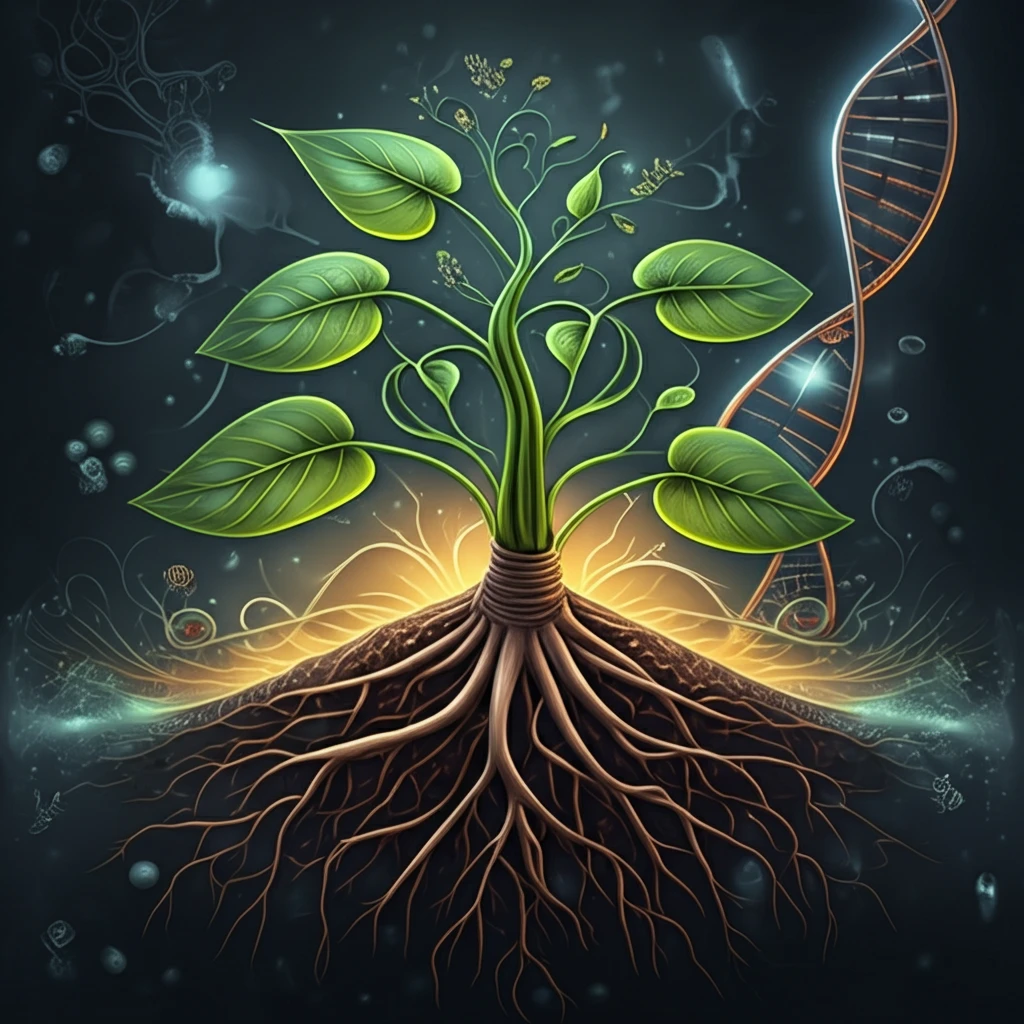
Decoding Plant Resilience: How Understanding Cellular Processes Can Help Your Garden Thrive
"Unlocking the secrets of salt tolerance in plants may hold the key to creating hardier, more resilient gardens and crops."
Plants, like all living organisms, face a constant barrage of environmental challenges. From drought and extreme temperatures to soil salinity and nutrient deficiencies, these stresses can significantly impact plant growth and productivity. Understanding how plants cope with these challenges at a cellular level is crucial for developing strategies to enhance their resilience.
Recent research published in Plant and Cell Physiology sheds light on the intricate mechanisms that govern salt tolerance in Arabidopsis, a model plant often used in biological studies. The study focuses on a protein called Patellin1 and its role in regulating the movement of sodium ions (Na+) across cell membranes, a critical process for maintaining cellular balance under saline conditions.
Salt stress is a major concern for agriculture worldwide, affecting vast areas of arable land and reducing crop yields. As climate change intensifies, understanding and enhancing salt tolerance in plants becomes increasingly important for ensuring food security and sustainable agriculture.
The Role of Patellin1 in Salt Tolerance

The research paper "Patellin1 Negatively Modulates Salt Tolerance by Regulating PM Na+/H+ Antiport Activity and Cellular Redox Homeostasis in Arabidopsis" delves into how Patellin1, a protein found in plant cells, influences the plant's ability to withstand high salt concentrations. Specifically, it explores Patellin1's impact on the plasma membrane (PM) Na+/H+ antiporter activity, which is essential for maintaining ion balance within the cell.
- Regulation of Na+/H+ Antiporters: Patellin1 appears to negatively modulate the activity of Na+/H+ antiporters. This means that when Patellin1 is more active, the antiporters may be less efficient at removing Na+ from the cell.
- Cellular Redox Homeostasis: The study also suggests that Patellin1 plays a role in maintaining cellular redox homeostasis, which is the balance between oxidation and reduction reactions in the cell. Salt stress can disrupt this balance, leading to oxidative damage.
- Implications for Salt Tolerance: By understanding how Patellin1 influences Na+ transport and redox homeostasis, scientists can potentially develop strategies to manipulate its activity and enhance salt tolerance in plants.
Practical Implications for Gardeners and Farmers
While this research is focused on a model plant, the insights gained can be applied to improve salt tolerance in a variety of crops and garden plants. Understanding the role of Patellin1 and similar proteins opens up possibilities for developing new breeding strategies or biotechnological approaches to enhance plant resilience. Gardeners can use this knowledge to make informed decisions about plant selection and soil management, choosing salt-tolerant varieties and implementing practices that minimize salt accumulation in the soil. The future of agriculture depends on our ability to develop crops that can thrive in challenging environments, and research like this is a crucial step in that direction.
